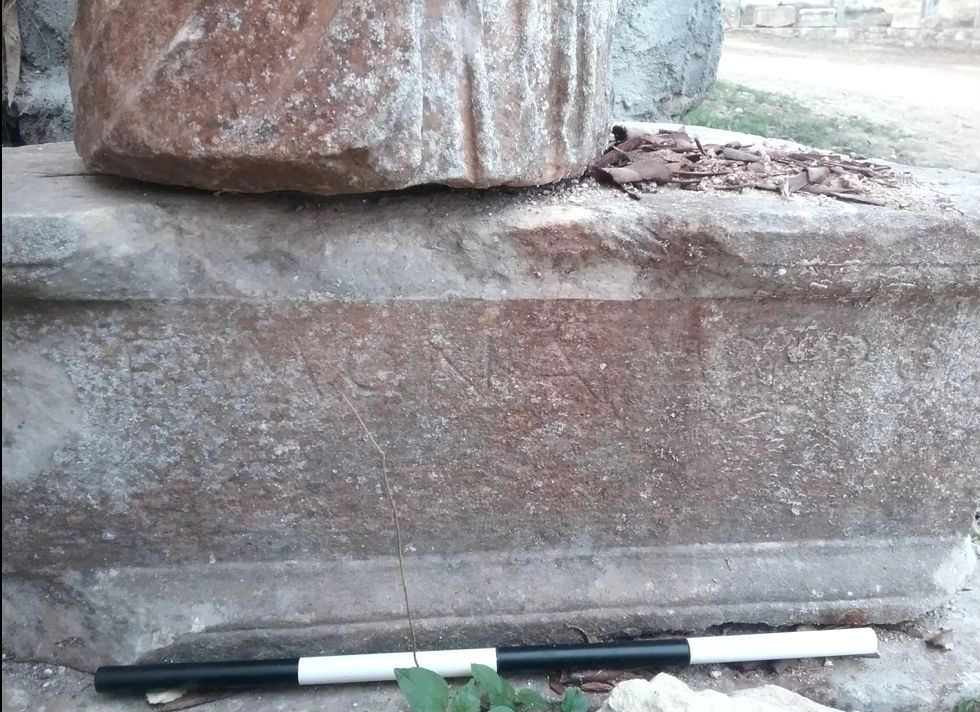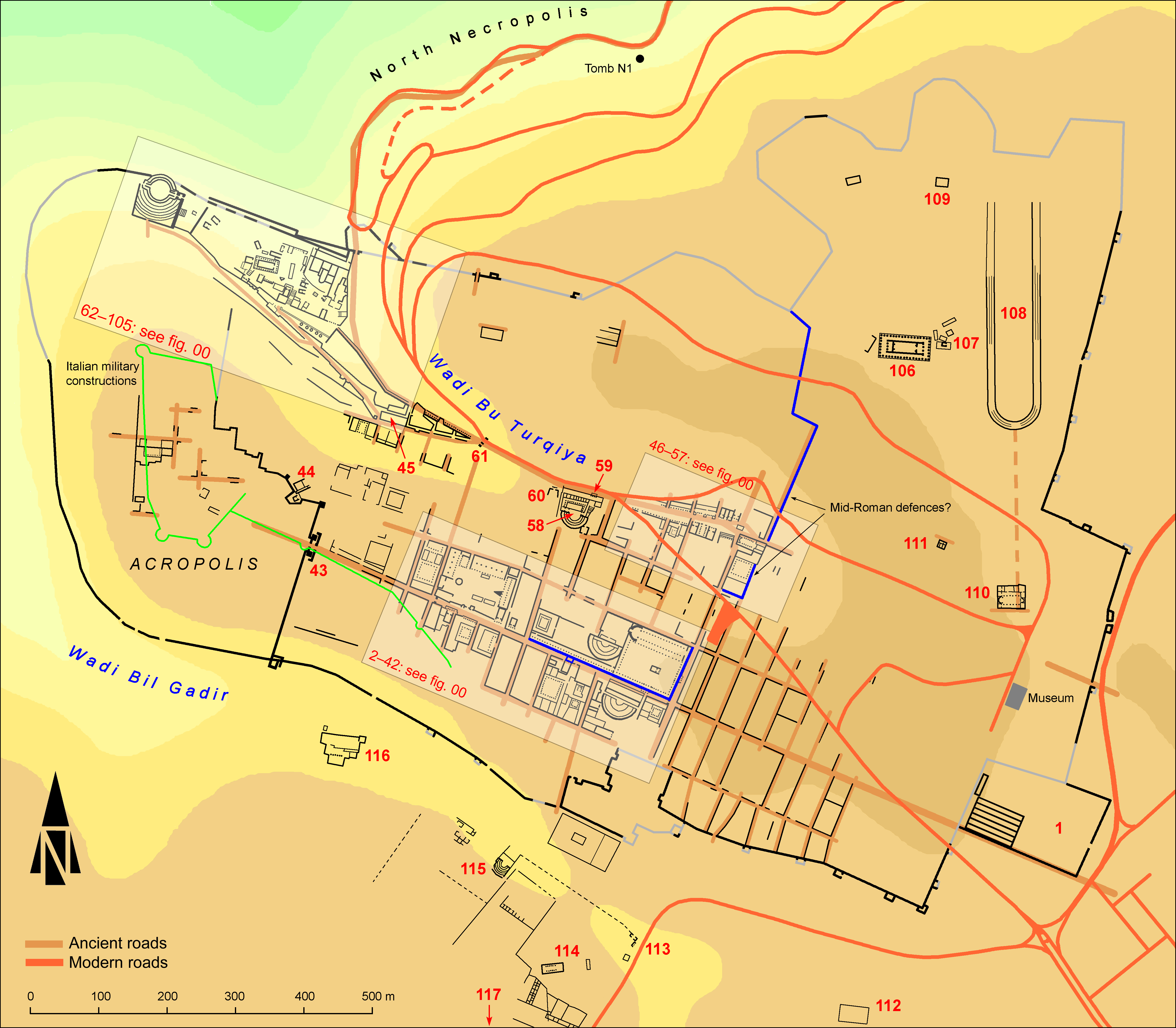EpiDoc XML:
IGCyr1388002
Trismegistos ID:
997650
Source description
Support: A white marble base with plain mouldings above and below on three sides (overall dimensions w: 0.64 × h: 0.243 × d: 0.415), slightly broken off at left and on the upper moulding.
Layout: Inscribed in one line on the front face (w: 0.57 × h: 0.144) just below the upper moulding.
Letters: Carefully cut letters (0.032) without serifs; slanting mu and sigma, smaller omicron, chalice-shape upsilon.
Date: Probably second half of fourth century BC (lettering).
Findspot: Said to have been found between 1957 and 1980 at Cyrene ➚: South Necropolis.
Place of origin: Findspot.
Last recorded location: Seen by Paci in 1979-1980 in Shahat, in front of the Casa Parisi, which is part of the Cyrene Museum. Seen by Gasperini in 2007 at the same place. Not seen by IGCyr team.
Text constituted from: Transcription from first edition (CDL).
Bibliography
Not included into IGCyr. Antolini 2021, pp. 44-46 and fig. 1-2.
Text
French translation
Hagémona fille de Myrô.
English translation
Hagemona daughter of Myro.
Italian translation
Hagemona figlia di Myrò.
Commentary
This type of bases with mouldings only on three sides are typical bases for funerary statues, intended for a placement against a wall. We have here two women's names. The first name is common in Cyrenaica: its first instances occur in epitaphs of Cyrene contemporary with this one (IGCyr0069002 and IGCyr0564002) and many more instances are known from all parts of Cyrenaica in the Roman period. As for Μυρώι, although the occurrences are less numerous, they are also dispatched in time and space. One instance (IGCyr1234002) is especially interesting because it shows also the dialectal genitive in -ός (for which see Dobias-Lalou 2000, p. 97). A point that should be stressed is the mention of the mother's name instead of the usual mention of the father's one. Hagemona's father was either unknown or not married with Myro. However she received funerary honours similar to those of ordinary citizens and her status was probably regular.
CC BY-NC-SA 4.0 Deed Attribution-NonCommercial-ShareAlike 4.0 International License.
All citation, reuse or distribution of this work must contain a link back to DOI: https://doi.org/10.60760/unibo/igcyrgvcyr2 and the filename (IGCyr000000 or GVCyr000), as well as the year of consultation.


